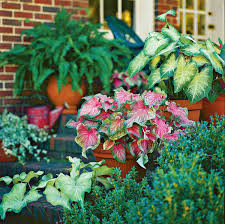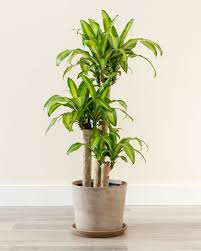:strip_icc():format(webp)/cdn.cliqueinc.com__cache__posts__255362__best-hanging-plants-255362-1524185190124-main.700x0c-d387354a871940f78eaf83eed4b77985.jpg)
MATTHEW WILLIAMS COURTESY OF JESSICA HELGERSON INTERIOR DESIGN
Whether you’re a master gardener or just beginning your houseplant collection, hanging plants can bring a fresh, green look to your space. If you’re interested in growing your indoor garden—and want to keep it simple—you don’t have to dedicate all your time to watering plants to have these beautiful varieties in your home.
To find out which hanging plants are best to bring the outdoors inside, we asked Erin Marino, director of brand marketing at the trendy online plant delivery service The Sill, for guidance.
Meet the Expert
Erin Marino is the Director of Brand Marketing at The Sill, an online plant store and “modern plant destination for the modern plant lover.”
Marino sheds light on hanging plant care, with information on everything from plant types to placement: “Keep in mind how easy (or difficult) it will be to reach your hanging planter,” Marino says. If your plant requires weekly waterings, be sure to hang it in an area that’s easily accessible. Other species like succulents won’t require much care, so they’re good candidates for those hard-to-reach spots.
If you’re a self-professed “black thumb,” read on to learn Marino’s favorite types of hanging plants—and the number one mistake to avoid when caring for them.
Caring for Hanging Plants
According to Marino, “setting and forgetting” is the most common mistake that many beginner gardeners make when placing their plants out of reach. “Hanging planters are awesome—but if you can’t reach them easily, you’re more likely to end up with an unhappy plant,” she says.
As with any plant, you should consider the amount of light, water, and humidity it needs in order to thrive. Think about where you’re planning to place your hanging planter, and look for plant species that will flourish in the amount of light they’ll receive there. “The majority of houseplants prefer stable environments, so don’t hang them in front of air conditioners, heating units, or open windows that could cause drafts,” Marino says.
Read on for the best hanging plants to add to your home.
01of 10
Tillandsia (Air Plants)
:strip_icc():format(webp)/GettyImages-932521176-534c911e774f4bd08ca680dcd28a31b9.jpg)
GETTY IMAGES/GERI LAVROV
- Botanical Name: Tillandsia
- Sun Exposure: Bright, indirect light
- Soil Type: Epiphytic
- Soil pH: 4.0 to 8.0 (Water pH)
Air plants, also known by their botanical name, tillandsia, are one of the easiest plants to care for thanks to their hardy growing habits. Since these plants are epiphytic—growing naturally on trees and other surfaces without soil—they’re also easy to style in glass terrariums, on wire hangers, attached to pieces of bark, and more.
Marino recommends this species because it doesn’t require any soil to grow healthy. If you’re placing your air plant in a terrarium, ensure its container has a hole with enough space to let fresh air inside. The expert recommends keeping your air plant’s humidity high by misting it between weekly waterings and placing it in an area with bright, indirect light.
:strip_icc():format(webp)/cdn.cliqueinc.com__cache__posts__255362__best-hanging-plants-255362-1524184931306-main.700x0c-9a1b184e05824893bc21407ba427f2a7.jpg)
The Sill Six Assorted Air Plants $30.00
SHOP
02of 10
Burro’s Tail
:strip_icc():format(webp)/GettyImages-179237033-066b5f96f8274f2e9186b7cfdd4c1eb2.jpg)
GETTY IMAGES/TRANTHANHTIEN
- Botanical Name: Sedum morganianum
- Sun Exposure: Bright, indirect light, or full sun
- Soil Type: Cactus or succulent soil
- Soil pH: 6.0 to 7.5
The soft, patterned leaves of this succulent are almost irresistible to touch. The burro’s tail (Sedum morganianum), native to southern Mexico, is named for its resemblance to the tail of a donkey. While it’s a unique and attractive species, burro’s tail is also a very easy plant to care for.
Resistant to drought-like conditions, this plant can handle direct sunlight and less-than-regular waterings. If you’re decorating an area in your home with hanging plants that are harder to reach, burro’s tail is a resilient option for those high-up hanging planters (just make sure it receives plenty of sun to grow healthy).
03of 10
Peperomia Hope
:strip_icc():format(webp)/GettyImages-1263240707-eaf51fbefa72474597e363b52a5cc424.jpg)
GETTY IMAGES/DIANA REBENCIUC
- Botanical Name: Peperomia rotundifolia
- Sun Exposure: Bright, indirect light
- Soil Type: Well-draining potting soil
- Soil pH: 6.0 to 6.6
Peperomia (Peperomia rotundifolia) is a favorite species of many indoor gardeners. While it thrives in bright, indirect light, this plant can also tolerate shadier conditions—so it’s a great option to decorate those corners further away from your sunny windows.
“This pet-friendly plant requires medium, indirect light to dappled sun, but can tolerate low light,” Marino says. Since its leaves aid the plant in holding its water, it won’t require as much attention as some of the more finicky trailing plant species.
04of 10
Spider Plant
:strip_icc():format(webp)/GettyImages-1026156198-2b992d52d9254154b51c14e6a06f505a.jpg)
GETTY IMAGES/DORLING KINDERSLEY: ROB STREETER
- Botanical Name: Chlorophytum comosum
- Sun Exposure: Bright, indirect light or full sun
- Soil Type: Well-draining potting soil
- Soil pH: 6.0 to 7.0
Also known as airplane plant, the spider plant (Chlorophytum comosum) is a tropical species that grows best with plenty of sun exposure. Long, stemmy vines produce smaller offsets at their ends, which often begin as white flowers and grow into mini spider-shaped versions of the mother plant.
Like the marble pothos, spider plant is an especially-easy houseplant to grow. Simply hang this plant in an area with plenty of direct or bright, indirect sunlight (like near a west- or south-facing window), and water it only when the soil feels dry. The spider plant is also great for propagating by trimming its offsets and rooting the new plants in water.
05of 10
Philodendron
:strip_icc():format(webp)/GettyImages-1253611126-e1fac7a2978c46c8bcfa50c2e6b96f56.jpg)
GETTY IMAGES/FIRN
- Botanical Name: Philodendron hederaceum
- Sun Exposure: Bright, indirect light
- Soil Type: Well-draining potting soil
- Soil pH: 6.0 to 7.0
If you’re looking for a trailing plant that can grow long, lush, and climb along surfaces in your home, look no further than the classic philodendron (Philodendron hederaceum). “At home, they can gracefully trail down from a hanging planter,” Marino says, adding that these plants do best in medium light with weekly waterings.
There are many variants of this popular houseplant—like the silver philodendron (Scindapsus Pictus) known for its shimmery leaves, and the philodendron pink princess or blushing philodendron (Philodendron erubescens) which features rosy, pink sections on its dark green leaves.
:strip_icc():format(webp)/thesillphilo-eb03cf3552e94c2fbeeb9993da6d55d7.png)
The Sill Philodendron $35.00
SHOP
06of 10
Boston Fern
:strip_icc():format(webp)/GettyImages-1220718245-ded1545e7a9f4d61a9378119513cabc2.jpg)
GETTY IMAGES/JADEZMITH
- Botanical Name: Nephrolepis exaltata
- Sun Exposure: Indirect light
- Soil Type: Loamy, well-draining potting soil
- Soil pH: 5.0 to 5.5
Since ferns grow in shaded areas underneath trees in their native environment, you’ll want to plant your Boston fern (Nephrolepis exaltata) in an area with gentle, indirect light. These tropical plants love moisture—making them great for adding greenery to your bathroom or another humid space. You can add extra humidity to your Boston fern by hanging a drainage tray from its pot, then filling the tray with pebbles and water to naturally produce moisture in the air around your plant.
To keep your fern healthy, be sure to keep its soil damp and add water when the top few inches start to feel dry. If you notice the leaves turning yellow or drying out, that’s a sign that it’s time to give your plant more humidity.
07of 10
Bird’s Nest Fern
:strip_icc():format(webp)/GettyImages-516630352-9d9bff6208e148e089fda105711d825f.jpg)
GETTY IMAGES/DEVILKAE
- Botanical Name: Asplenium nidus
- Sun Exposure: Bright, indirect light, or partial shade
- Soil Type: Well-draining potting soil
- Soil pH: 5.0 to 5.5
Like air plants, the bird’s nest fern (Asplenium nidus) is epiphytic. It can also be planted in a well-draining potting soil for hanging planters. This tropical species is another humidity-lover, so it’s a good idea to hang your bird’s nest fern in your bathroom or spritz it regularly with water. Its crinkled leaves face upward towards the sun and will grow climbing around its pot.
“The bird’s nest fern is characterized by ripple-edged fronds that grow out of a nest-like crown,” Marino says. “It does well in low to medium light, watered weekly. It prefers a little extra humidity, making it a great pick for a bathroom with a window—think instant spa vibes.”
:strip_icc():format(webp)/cdn.cliqueinc.com__cache__posts__255362__best-hanging-plants-255362-1524184960790-main.700x0c-09aa001dc44d4444b8f6d4848401601f.jpg)
The Sill Bird’s Nest Fern $43.00
SHOP
08of 10
String of Pearls
:strip_icc():format(webp)/GettyImages-1296819018-4ac63182fec845079a85832a58958148.jpg)
GETTY IMAGES/DIMA BERLIN
- Botanical Name: Senecio rowleyanus
- Sun Exposure: Bright, indirect light
- Soil Type: Cactus or succulent soil
- Soil pH: 6.6 to 7.5
String of pearls (Senecio rowleyanus), a bead-shaped succulent, is part of the succulent family including string of hearts. A north- or east-facing window is the best place to hang this plant to ensure it receives plenty of nutrients from sunlight without burning its leaves. To avoid damaging its roots with excess water, hang a drainage tray from the plant’s pot or create your own drainage with a layer of rocks inside the pot.
“Most hanging planters do not have drainage holes,” Marino says. “Create your own drainage by lining the bottom of the planter with an inch or so of rocks—like lava rocks—before adding the potting mix and plant.”
Purple Heart Plant
:strip_icc():format(webp)/GettyImages-611859664-02a2ca14f81843d2a494062e1cf55e59.jpg)
GETTY IMAGES/HIDDENCATCH
- Botanical Name: Tradescantia pallida
- Sun Exposure: Bright, indirect light or full sun
- Soil Type: Loamy, well-draining potting soil
- Soil pH: 5.0 to 6.0
This species in the spiderwort family—also known as Wandering Jew—grows as a long, trailing purple variety. The purple heart plant (Tradescantia pallida) is a durable plant, able to tolerate everything from full sun to partial shade.
If you’re looking to add some color to your plant collection, the bold, deep purple color of this plant’s vines and pink flowers will stand out against your other greenery. Purple heart plant typically grows about two feet in length, but can reach heights of eight feet tall when growing outdoors along a trellis or similar structure. When planting this species inside, be sure to place it near a sunny window, as its signature colors pop the brightest when exposed to plenty of light.
Marble Pothos
:strip_icc():format(webp)/GettyImages-1181102866-d100ad70b8d644be93c18f8382d9d239.jpg)
GETTY IMAGES/MARIELLA MCNEANY
- Botanical Name: Epipremnum aureum
- Sun Exposure: Bright, indirect light
- Soil Type: Well-draining potting soil
- Soil pH: 6.1 to 6.5
Similar to the philodendron, the marble pothos (Epipremnum aureum) grows long and hardy. The marble pothos can reach around 10 feet in length indoors, and along with its beautifully-marbled variegated leaves, it’s known for its resilient growth habits: Making it an excellent choice if you don’t have a green thumb.
“This is a great choice for beginners, and it can be easily propagated by stem cuttings,” Marino says. “They do well in low to medium light, [and] can tolerate lower light levels than most common houseplants.”
:strip_icc():format(webp)/pothos-27d23d0cb56c45cea8ea3360ddcf22cf.png)


